Tales of Moderate Terror II
It's time, once again, for a collection of spooky forgotten tales! Lost Threads has finally returned to celebrate Halloween with terrifying tales pulled directly from old newspapers.
Lost Threads has returned from the dead to celebrate our favorite spooky holiday! Our Halloween episode features a collection true, terrifying stories that will chill you to the bone. Here you'll find the original newspaper articles from which we drew our stories.
Episode Transcript
Tales of Moderate Terror II
Cory: The Newcastle Weekly Courant. Newcastle Upon Tyne, England.
July 29th, 1732.
On Wednesday last, a woman of the city went to a garden to gather a mess of green herbs. She took hold of the top of her radish and pulling it up, found the stem grew in the appearance of a child's hand and fingers. Being surprisingly strange, it was carried before a magistrate who ordered it to be put in some spirits to preserve it. It continued in the shape and color of a human hand with five fingers with sinews and joints, which opened and shut. Some are of the opinion that an infant had been buried in the garden and the seed of the radish had taken root in the wrist of the child's hand. It is to be seen in the city where an abundance of people report daily to see it.
Cameron: Halloween is probably my favorite holiday. I love everything about it. The horror movies, weather, traditions, and especially ghost stories.
Cory: When I was a kid, my friend's mom backed her car into me while she was dropping us off to go trunk or treating, and that's the only time I've ever been hit by a car.
Cameron: Totally. And some of my favorite Halloween stories are anthology shows like Treehouse of Horror or Tales From the Crypt. And that's the kind of show we've put together for you all today.
Cory: The following tales come directly from newspaper archives. So each one was written as a news story and none were intended to be read as fiction.
Cameron: Also , We Want to note that these articles have been edited for length. When appropriate, we also modernized the language for both brevity and clarity.
Cory: Without further ado, let's jump in.
Cameron: Brace yourself for more true forgotten history just in time for Halloween. I'm Cameron Ezell.
Cory: And I'm Cory Munson.
Cameron: And you are listening to Lost Threads.
Cory: In 1764, newspapers across Europe reported on an ongoing story of a horrible, man-eating creature terrorizing villagers in Gevaudan, a rural region in Southern France.
Cameron: November 1st, 1764.
A wild beast has appeared for these two months past in Gevaudan. It has already devoured 20 persons, chiefly children, and particularly young girls. And hardly a day passes without some accident.
Tis only within this week past that anybody could get a good view of this formidable animal. He is much higher than a wolf and his feet are armed with talons. His mouth, which is large, is provided with a set of teeth, so very sharp that they have taken off several heads as clean as a razor could have done.
At a distance of four meters, he rises upon his hind legs and springs upon his prey which he always seizes by the neck or throat. The Marquis de Marangis has sent out 400 peasants to destroy this fierce beast, but they have not yet been able to do it.
Cory: For centuries, sailors have reported countless strange encounters from ghosts and haunted ships to horrifying creatures and weird natural phenomena. Up until the 20th century, nothing sparked the public's imagination more than a good tale of horror on the sea.
Cameron: Weekly wanderer. July 13th, 1808.
The wind being easterly, we had 30 fathoms of water when at 10 o'clock a sea monster, like a man appeared near our ship. First on the port side where the mate William Lomone was. He took a grappling iron to pull the monster up. But our captain, Oliver Morton stopped him, afraid that the monster would drag him away into the sea.
Lomone instead struck him on the back to make him turn about that he might view him the better. The monster being struck, clenched his fists as if expressing anger.
He went round the ship and proceeded to the starboard. swimming in the same manner as men. When he came to the fore part of the ship, he studied the sculpture of a woman that was in our prow, when he suddenly rose out of the water as if trying to capture her. All of this happened in sight of the entire crew. Afterwards, he came again to the port side where the crew presented him a codfish hanging down with a rope. He handled it carefully and then removed the length of cable.
At that very moment, Captain Morton got a harping iron ready and took it himself to strike him with it. But the cordage being tangled, he missed his aim, and the harping iron only grazed the monster who turned about, showing his face.
He was eight feet long. His skin brown and tawny, without any scales.
All his motions are like those of men, the eyes a proportionable size. A little mouth, very white teeth, black hair. The chin covered with mossy beard as sort of whiskers under the nose. The ears like those of men. Fins between the fingers and toes on his hands and feet.
After a gun's shot, he rose out of the water to the navel. We observed that his breast was as large as that of a woman and when turned upon his back, he appeared to be a male. Afterwards, he swam again, round the ship and went away having never seen him since. I believe that from 10 o'clock to 12 that this monster was along our board that had the crew not been frighted, he might have been apprehended, being only two feet distant.
Cory: Martinez News Gazette. April 15th, 1893.
Captain Atkinson of the ship Goodrich now lying at anchor off Martinez, California, relates a weird story told to him by Captain Spurring of the ship Drumcraig. While rounding Cape Horn on the last voyage from San Francisco and Liverpool, the Drumcraig narrowly escaped destruction by a mammoth iceberg. As the ship passed by the iceberg and slowly veered around there came into view, a sight that chilled the marrow in the bones of the Drumcraig's crew. On a portion of the jagged berg rested a wooden ship as cold and lifeless and more ghastly than the ice that bore her. Her sails were set and had become sheets of ice. Her shrouds were white and stout icicles hung from the rigging. The frightened sailors saw rounded piles of frozen men. Lashed to the rigging and shrouded in the all enfolding ice were two sailors who were still at their posts . The unknown ship had been caught in the ice. How long ago, no one can guess. And then began her weird and spectral voyage. The sport of perpetual storms and icy currents
Cameron: Old newspapers are filled with tales of paranormal encounters. While ghost sightings tend to invite a great deal of skepticism, we occasionally run across a story that captures our attention and leaves us questioning whether there's some merit to the terrifying account.
Cory: The Carthage Blade. Momence, Illinois. February 16th, 1893. William Birch, engineer, and William Caller, a fireman on the Chicago and Eastern Illinois Railroad relayed a weird experience they had while running a train south last Friday night. They were making their usual time and everything had run smoothly until they approached the graveyard that every passenger on the road has noticed just south of Oxford, when they discovered in front of them alongside the track, a headless woman. She jumped on the track and by the light given out from the engine's headlight, they could clearly see the mutilated operation. The engineer, threw the throttle wide open, but he was so badly frightened that he cannot tell whether he did so to get away from the ghost or to run it down. At any rate, the train could not gain on the woman, and she kept about 20 feet ahead of the pilot until they reached a crossing when she disappeared as suddenly and mysteriously as she had come. Birch and Caller were still nervous when they pulled into Brazil station, and while admitting that they were frightened out of their wits, no power on Earth can change their belief that they saw a ghost.
Cameron: The Recorder. Greenfield, Massachusetts. January 10th, 1798.
A true and surprising account of the apparition or ghost of a woman that has appeared several nights past in the new jail to the great terror of the prisoners, many of whom are ready to confirm the truth of it on oath.
Captain Fish declares that for several nights past the apparition of a woman has haunted the jail from room to room followed and encircled by a radiant light, dressed in a white flowing robe and a turban on her head, seemingly of a pleasing but dejected countenance.
Captain Fish declares that about 12 o'clock on Friday night, this apparition came to his bedside.
Looking steadfastly at him for some time, he asked the ghost to tell him who she was or why she came in " so questionable a shape". That's when she gradually disappeared.
A prisoner named Mr. Miller going to the upper hall at about one in the morning was met by the same woman who pulled him by the coat. He was so alarmed and frightened that he stood petrified as a statue. When he came to, he saw her gradually advance to the window from which she vanished. He then called to the watchman to ask him if he had seen it. He declared he did, and that he had seen it vanish from the same window several nights successively.
Mr. Miller further declares that after she was gone, a large globe of fire of the most beautiful and diversified colors rolled up and down the hall for the space of five minutes. This was followed by a sudden burst with a dreadful explosion, leaving him in total darkness and frightening him worse than the first encounter of the apparition.
Cameron: February 8th , 1765.
The Wild Beast, which desolates the Gevaudan, still continues his ravages there. On the 12th of January, he attacked five little boys of the village of Villeret. The beast stalked round them two or three times and at last sprung upon one of the little boys. The three biggest stabbed him several times without being able to pierce his skin.
However they persuaded him to let go his prey. The beast fled after having tore off part of the little boy's right cheek, which he ate up before their eyes.
He then took off towards Mazel, where he devoured a young lad of 15.
It is to be hoped that with the reward of 2000 crowns promised by the king to any person that shall kill him, will deliver us at last from the terrible animal.
Cory: Kansas City Journal. June 3rd , 1895.
An officer of the Kansas National Guard, relates a weird tale of a cannon owned by the state of Kansas, with an insatiable love for blood. Long retired from the battlefield, the deadly ordnance, known as The Bloody Butcher, is now used to fire salutes on decoration day. But for years it has never failed to do some deed of blood. Last Thursday, when Gunnar Joseph Fennel was ramming home a charge, preparing to fire a salute at the Wichita Cemetery, the butcher prematurely exploded and tore off his right arm.
At Arkansas City three years ago, the bloody butcher was being used in a Grand Army celebration and watching its treacherous chance tore off both arms of Harry Parks, who had only just started to receive his pension of $25 each month. On three other occasions, it has injured men who were seeking to force it to do its duty at commemorative celebrations.
The Bloody Butcher is a veteran. It was in Major Ringgold's battery throughout the Mexican War, and it is said that the battery boys used to gather about the campfire and whisper in mysterious tones that the piece had been hoodooed by a Spanish sorcerer, for it was up to its impish tricks even then.
A lot of old artillery officers at Wichita, who are so unimaginative that they refuse to believe that a cannon can be malevolent, got together on Friday and examined its bore with the aid of mirrors. They report that she is honeycombed with holes which hold sparks and cause premature explosions, but the real facts are that she was either hoodooed by that Spaniard or else the very devil is in her. The National Guard officer we spoke of earlier plans to head to the Capitol soon to get permission to destroy the thing by fire.
Cameron: Most terrifying tales we find usually come straight out of real life.
These next articles reveal just how bloodthirsty our fellow humans can be.
Cory: Hartford Courant. Hartford, Connecticut. August 27th, 1770.
We hear from Waterbury that a woman of the town who was in the fourth or fifth month of her pregnancy was taken with the most violent longing to eat the flesh of her husband's arms. He indulged her in making several attempts, but her teeth were not sufficient for her purpose and her unaccountable longing continued until her delivery, which was about three weeks ago. The infant, refusing the breast or any other sustenance usually given to infants, was offered the flesh of a fowl dipped in the fowl's blood, on which it has fed nearly every day since its birth and is the only food the child has taken till a few days since when it ate a little milk mixed with blood.
Cameron: The Derby Mercury.
Derby, England.
August 28th, 1772.
John Nicholas Goldsmith, a cow herd in the small village of Eichelborn, by his own confession on the day of his execution, had killed several young lads, and for no other reason, but to gratify his unnatural and inhuman passion for eating human flesh. He had, for this purpose, a cottage not far distant from the village. Near to it he had a cave into which he never would permit his wife to enter. In this cave he deposited the bodies of such lads as he had murdered from time to time.
Here he cooked and here he feasted upon them.
The last unhappy youth that fell a sacrifice to his unnatural palate was decoyed into his house. The cannibal had no sooner got him in his clutches than he murdered him. After he had thus butchered up the boy, he was in a great hurry to carry him to his cave before his wife should return home.
But another cowherdsman, who lived opposite to this cannibal and seeing him incessantly going backwards and forwards and always with a little bundle in his hand, had at last the curiosity to watch his neighbor enter the cave of death.
There he watched this wretch of wretches carefully lay the leg and thigh of a newly murdered lad down upon a stone, and then pickle it with salt.
Shocked at this inhuman scene, the witness instantly attested the fact to a neighboring magistrate who immediately ordered the cannibal to be brought before him, where he then confessed the whole truth.
Upon being asked whether this lad was the only one he had ever murdered, he told the magistrate that he had killed in all no more than 15 young and old.
He further informed the court that at one time he had more human flesh than he could eat while it was sweet. An idea came into his head to feed his dog with it. And for the next 10 or 12 days he did so, believing it would give his dog's flesh the true human flavor.
He afterwards killed the dog and found that the flesh had exactly the same exquisite taste that human flesh has.
The judge , condemned him then to be broken upon the wheel alive. The cow herd acknowledged the sentence and added it could not be half so bitter as to die without having first satiated his appetite
May 3rd, 1765.
The wild beast of Gevaudan to our sorrow is still alive. On the evening of May 1st, the Sieur Martel de la Chaumette perceived an animal which he judged to be the wild beast. He was seated on its hind parts looking steadfastly on a young shepherd about 15 years of age. The Sieur de la Chaumette informed his two brothers of it. Two of the brothers placed themselves in ambush on a height above the meadow, while the third, going directly up to the wild beast drove him into the trap.
The youngest of the Chaumettes fired at him and the beast fell and rolled two or three times. The eldest brother then fired, and it raised itself hastily and fled, shedding a great deal of blood.
The three brothers followed it for some time, but night obliged them to give up the pursuit.
The next morning, they found only traces of blood and they believed we had finally been delivered from this dreadful animal.
But at five in the evening, it devoured a girl 14 years of age.
For our final story, we bring you a true but little known tale of horror that shook a small Indiana community to its core.
Cameron: it was September, 1893 in the small farming community of Washington in southern Indiana. Summer was fading and across the countryside, families harvested corn and braced for the long winter ahead. Among them were the Wrattens: Hillard, and Ada, and their three children; Ethel, Stella , and little Henry, just three years old. Hillard's aging mother Elizabeth also shared their home.
They lived in a modest farmhouse surrounded by tall grass and endless rows of corn. Isolated and tucked far from the nearest neighbor, the Wratten home felt safe, but that sense of peace wouldn't last.
On the morning of September 19th, 1893, a neighbor named James Stone known to everyone as Budd rode his horse across the fields to the Wratten home.
He had come to check on Hillard, who had been bedridden with Typhoid fever.
As Budd approached the farmhouse, he noticed the side door was ajar. The usual sounds of the busy family home were gone, replaced by an unsettling silence.
Inside, just beyond the doorway, lay Hillard's, elderly mother Elizabeth. She was crumpled on the floor, soaked in blood. Her corpse bore deep stab wounds and signs of a struggle were everywhere.
Budd stepped past the entryway into the house, and witnessed a nightmarish scene. Next to Mrs. Wratten was Ada, Hillard's wife. Her head had been split open and her dark hair clung to the blood soaked floorboards. In the main bedroom, Hillard laid where he had been recovering from his illness, nearly decapitated.
In the children's bedroom, 9-year-old Stella was in the corner. Her small body decapitated amongst the dolls. In the crib was baby Henry. His head had been severed and his tiny body was drained of all color.
At the doorway to the room was Ethel the oldest, just 11. She was still in her nightgown, lying face down in a pool of blood. She was the only one still alive, unconscious, and clinging to life.
Hours later, local authorities arrived at the Wratten Farm, bloodhounds in tow to search for their killer. The bodies, already deprived of their color, told investigators that the murders likely happened the night before or earlier that morning.
The Wrattens' only surviving child, Ethel, was brought to a neighbor's home to recover. Doctors visited and did what they could, but three days later, Ethel Wratten died.
Over the next few weeks, police arrested several men, each known around town for petty crimes, but one by one those leads went cold.
Nearly a month after the murders, on October 23rd, Budd Stone's wife spoke to the police about what she knew. On the night of the murders, Budd had left the house around 10:00 PM complaining of a toothache. He didn't return for several hours, and when he did, he was covered in blood. No doctors or dentists in town had seen him that night, and this was enough to arrest Budd Stone, who eventually confessed to the crime.
Just before midnight, Budd Stone told his wife he was leaving to take care of his toothache. He mounted his horse carrying a corn knife and a short-handled ax, and rode to the Wratten house. From outside, he peered through a window. Hillard was bedridden, still sick with typhoid. In the other room, the children were asleep.
Ada and Elizabeth moved quietly through the house preparing medicine for Hillard.
Budd walked to the side door and knocked. When Ada answered, he asked if she had anything that might help his toothache. She stepped away to look for some medicine. As she returned, Budd would later claim he heard a voice tell him " it's time to hit her". He raised the corn knife and drove it into Ada's neck again and again. Elizabeth saw the attack and lunged at him, screaming. Budd swung the hatchet, striking her in the head. Down the hall, 11-year-old Ethel woke to the sound of her mother's screams.
She walked towards the family room and saw Budd. He turned and stabbed her in the side. She dropped at the doorway to the children's bedroom.
Budd stepped over her decapitating, Stella and Baby Henry. Down the hall, Hillard Wratten laid helpless. Too weak to move from his bed, he heard his entire family slaughtered. Their screams echoing through the farmhouse walls.
When Budd entered the room, Hillard tried to sit up, but his strength was gone. Budd struck him with the hatchet .
The motive, Budd later claimed, was robbery. But in his panic, he left most of the money behind. Instead, he rode home, his clothes soaked in blood.
The next morning, he returned to see what he had done in the light of day, before riding into town to report the murders.
In the days that followed, Budd inserted himself into every part of the investigation. He offered help to the police, he assisted the undertaker in preparing the bodies, he even served as a pallbearer at the Wratten's funeral.
But there was still one Wratten left.
While Ethel was recovering at a nearby home, Budd invited himself over for dinner.
During supper, Budd excused himself from the table and snuck into Ethel's room, where he smothered the young girl: the last remaining witness.
Budd Stone pled guilty to the murders and was sentenced to death by hanging. At the Indiana State Prison in Jeffersonville, Warden Patten ordered a three quarter inch hemp rope from Louisville and treated it with tallow to ensure a swift clean break.
His only concern was a large cyst on the left side of Budd's neck.
Just after midnight on February 16th, 1894, a hush fell over the prison yard. Spectators stood in silence as Budd Stone was led to the scaffold.
Budd stared straight ahead as Warden Patten slipped a black hood over his head and tightened the noose around his neck.
The trap door opened and Budd dropped with a jolt. As the rope cinched around his neck. His cyst burst with a wet pop. Blood filled the hood, seeping through the fabric, and released a cloud of steam into the winter night.
The Wrattens were buried in Ebenezer Cemetery, laid to rest side by side.
Budd Stone was buried 300 yards north of the family he murdered, next to a cold field in an unmarked grave.
The murders would go on to inspire a nursery rhyme told throughout the Midwest during the early 20th century:
The first was young Miss Wratten.
She tried not to let him in.
He stabbed her with a corn knife.
That's how his crimes begin.
The next was Grandma Wratten.
So old and tired and gray.
She fit off her attacker until her strength give way.
The next was Papa Wratten,
a settin by the fire.
He crept up close behind him
and strangled him with a wire.
The last was baby Wratten
all in his trundle bed.
He stove him in the short ribs
until that child was dead
and spit tobacco juice
all on his golden head.
Thanks for joining us for the relaunch of Lost Threads. We have a number of episodes we're excited to share in the coming weeks and months, so please make sure to subscribe to us on Spotify and set up auto download as it really helps us. For visuals and sources from today's episode, visit us at lostthreads.org. Our podcast is independently produced by two humans, Cory Munson and myself, Cameron Ezell. Happy Halloween!
The transformation of a radish into a child's hand

A ravenous beast that ravaged the Gevaudan
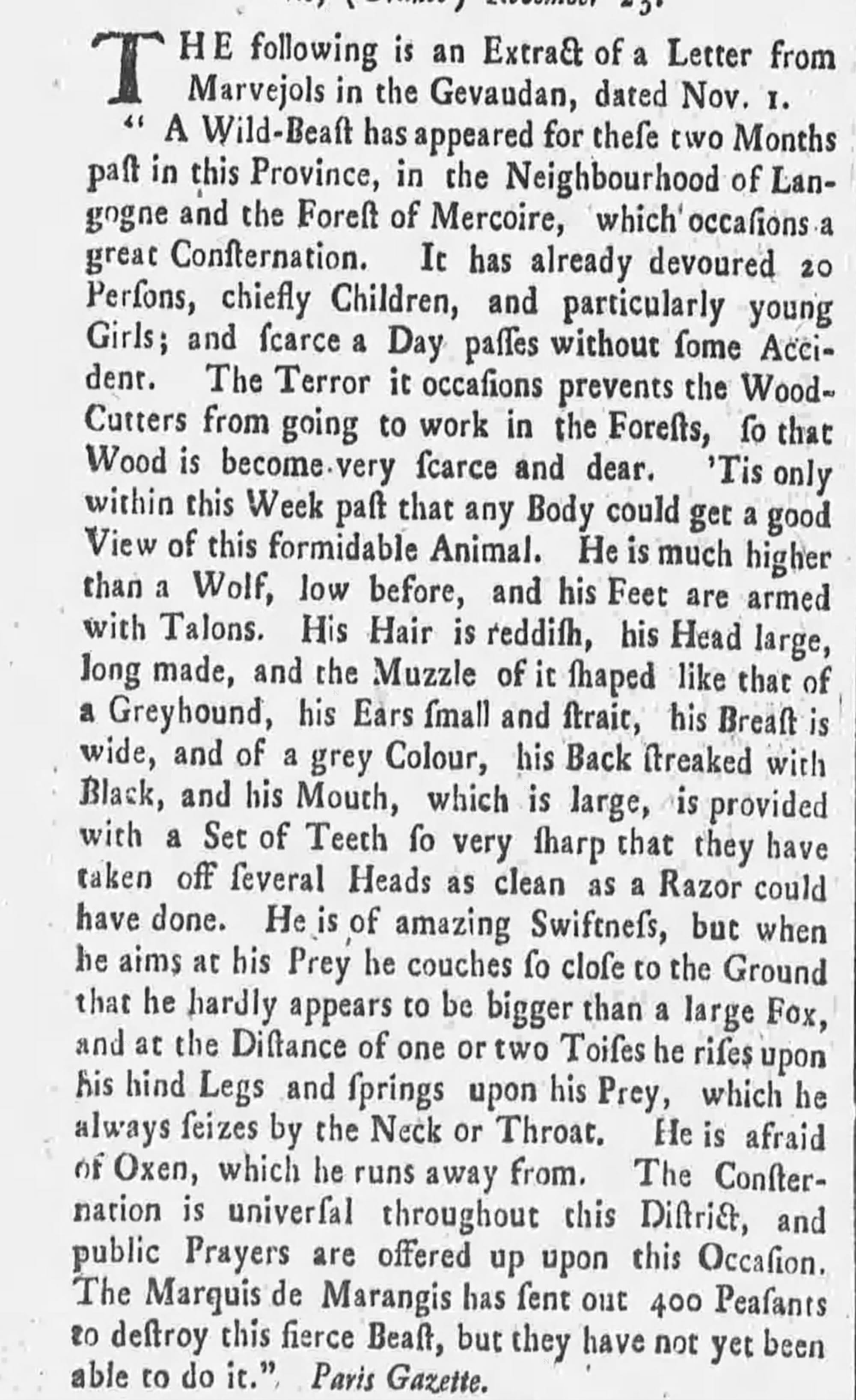
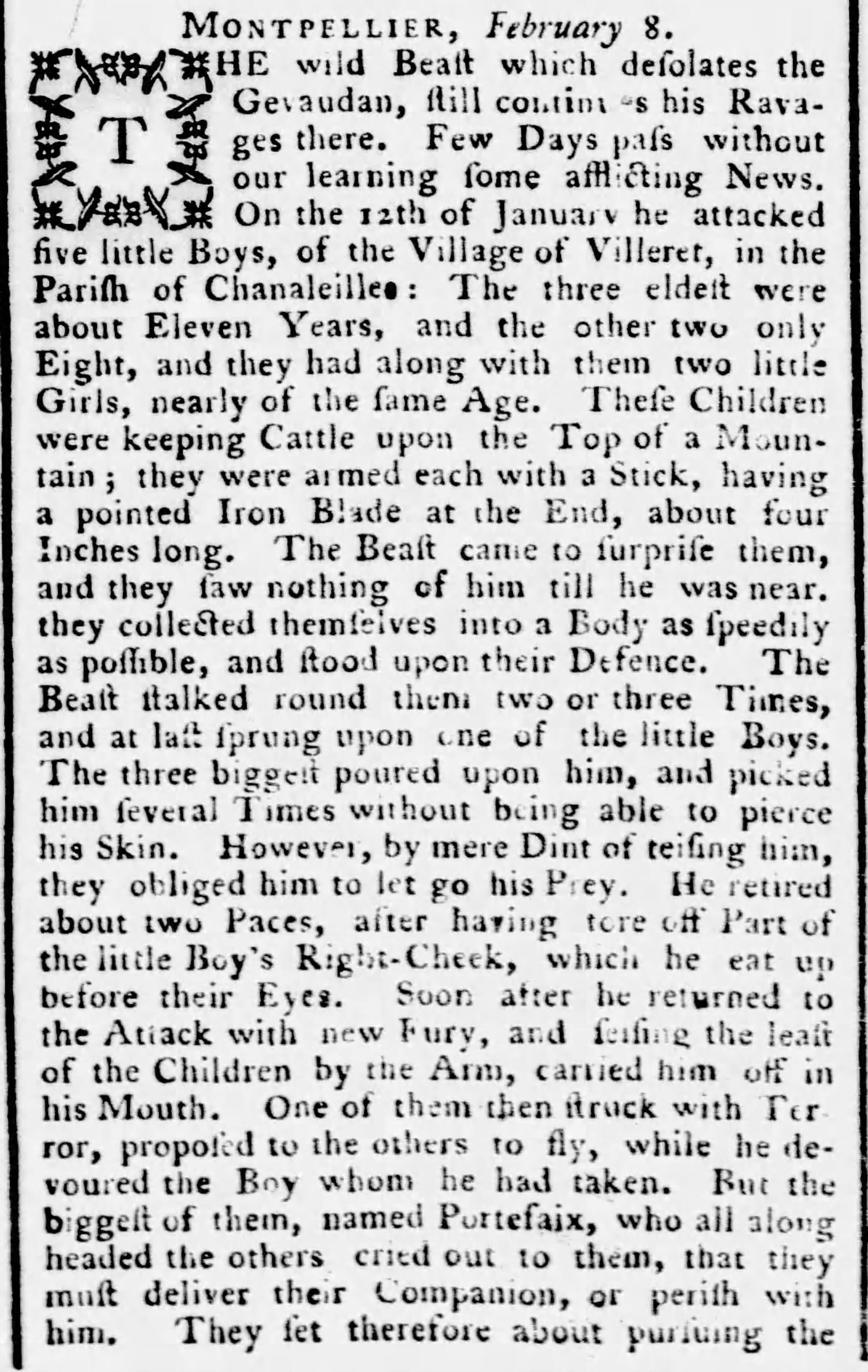
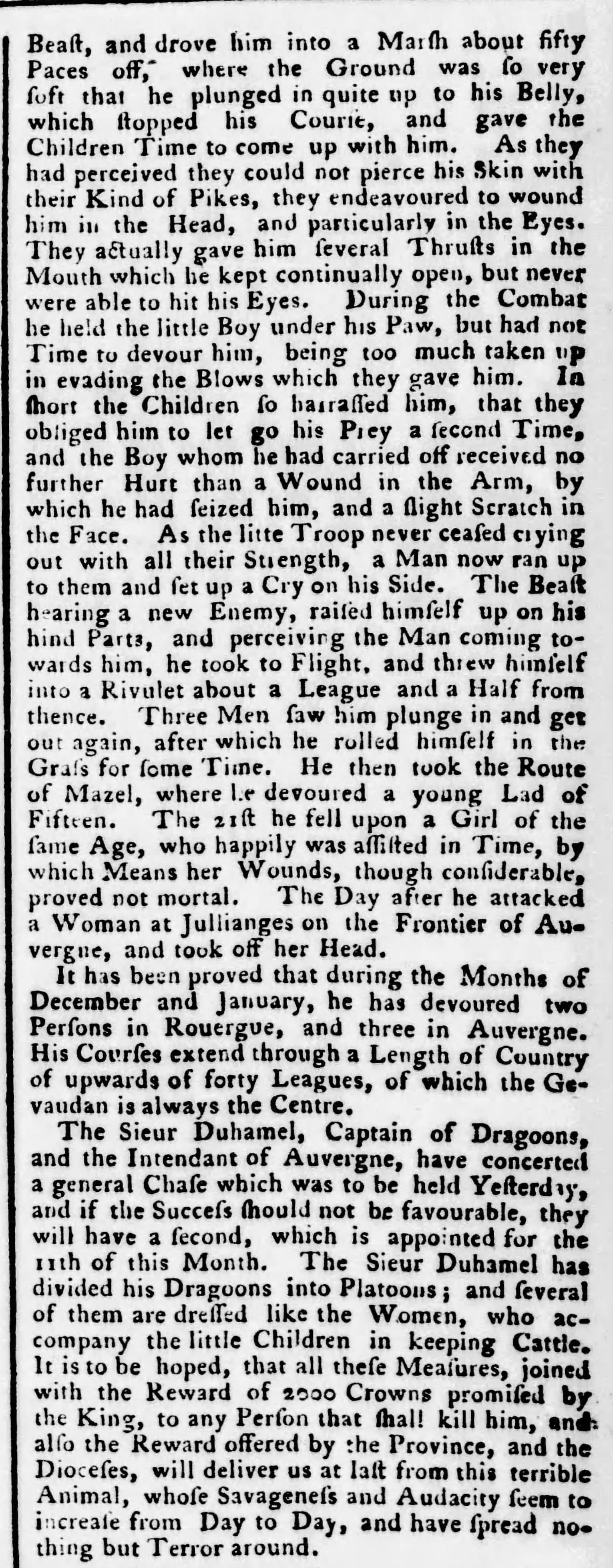
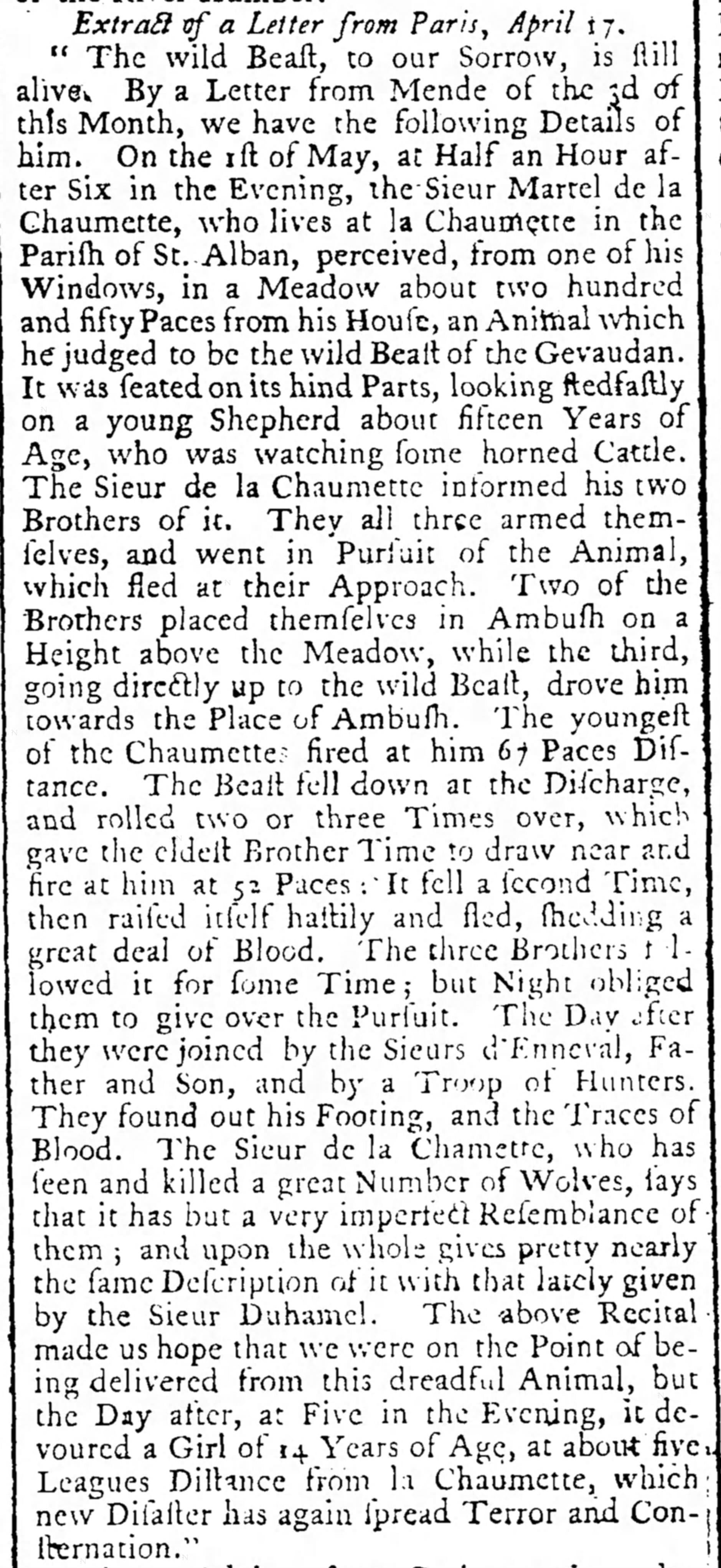
Various papers reporting on the beast of Gevaudan, 1764 - 1765
Reports of a merman
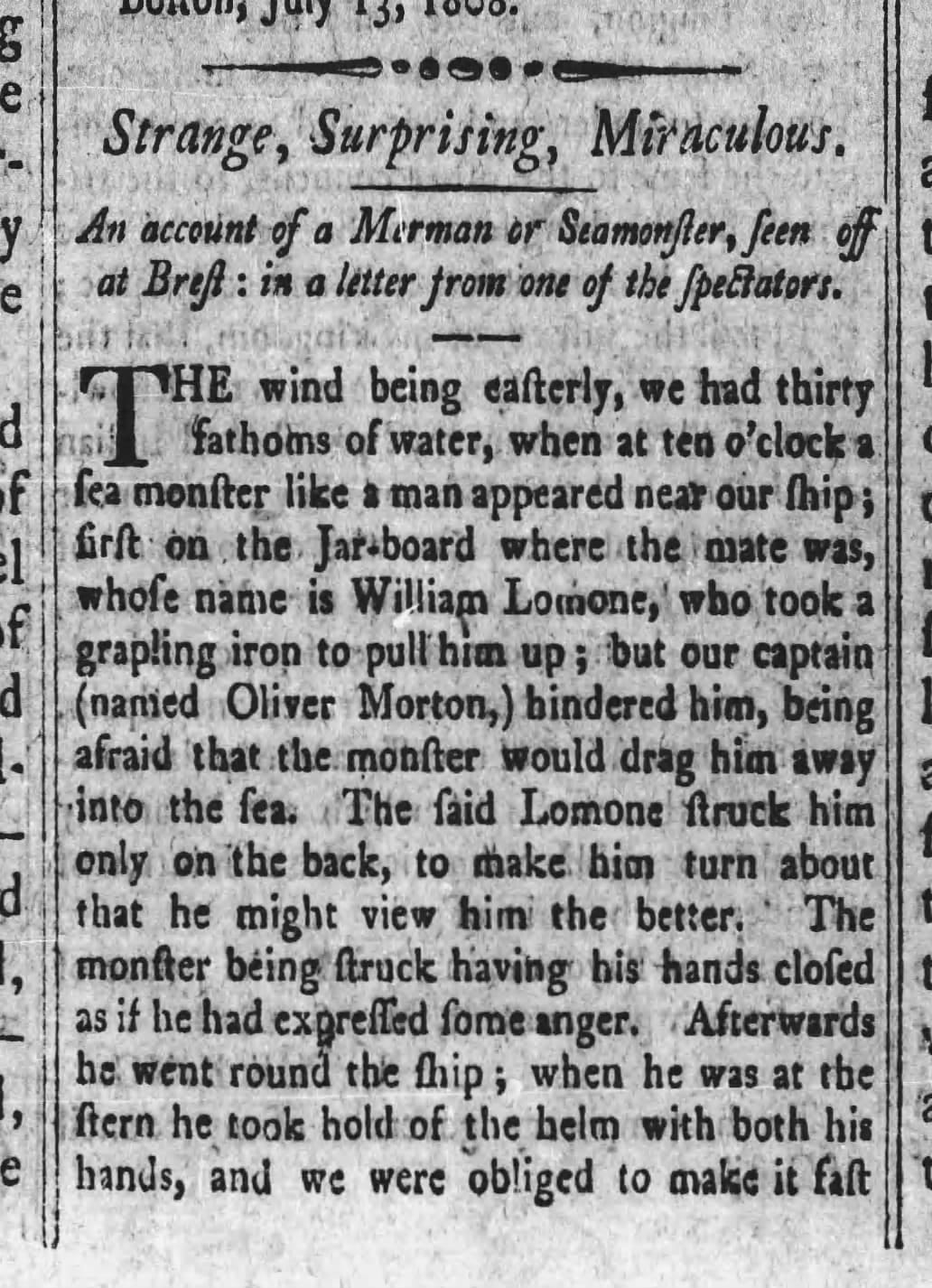
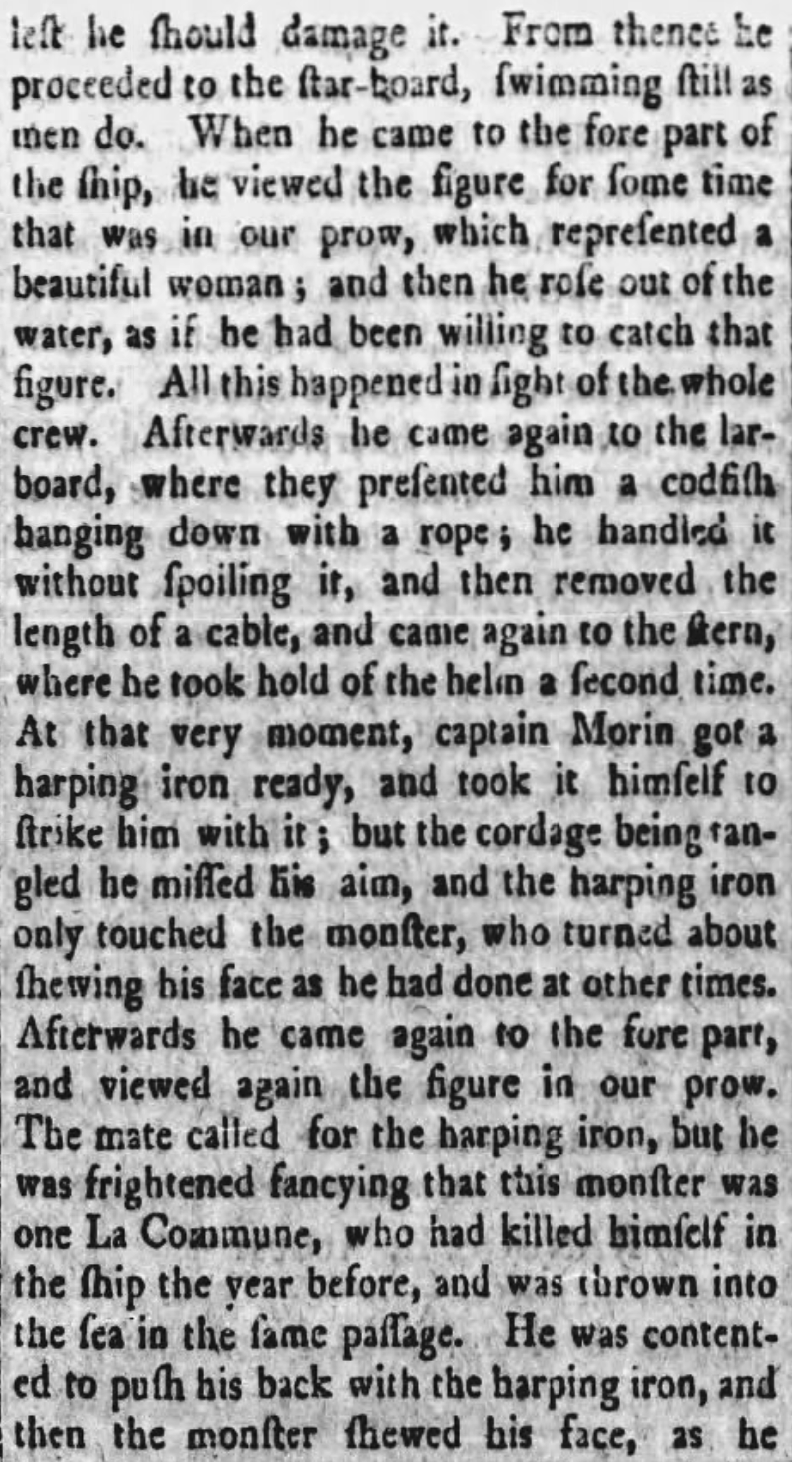
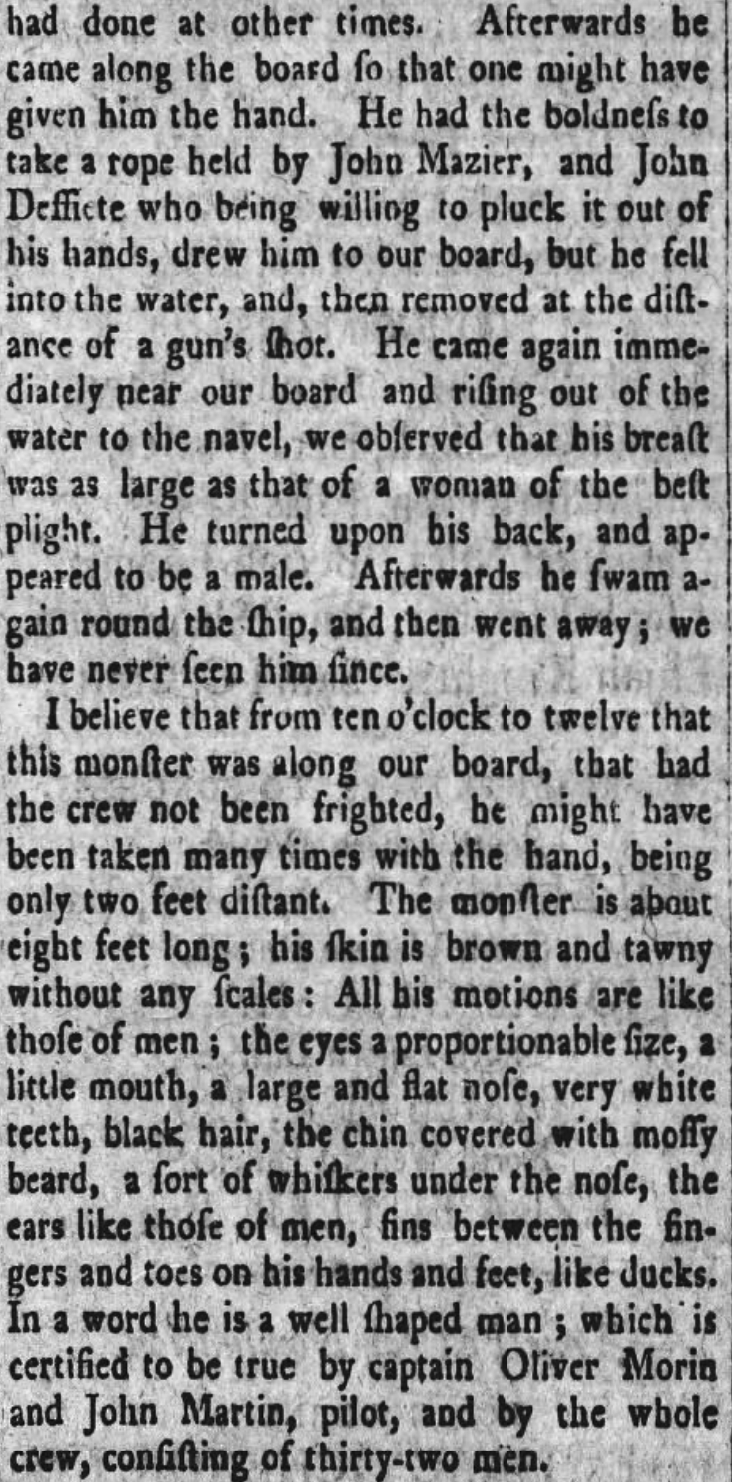
Weekly Wanderer - August 8, 1808
A sighting of a ghost ship upon an iceberg
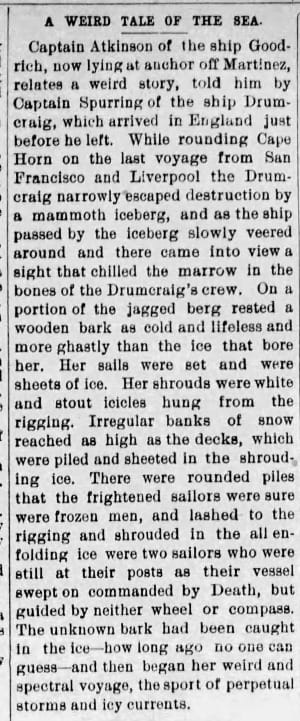
A headless ghost pursuing a train
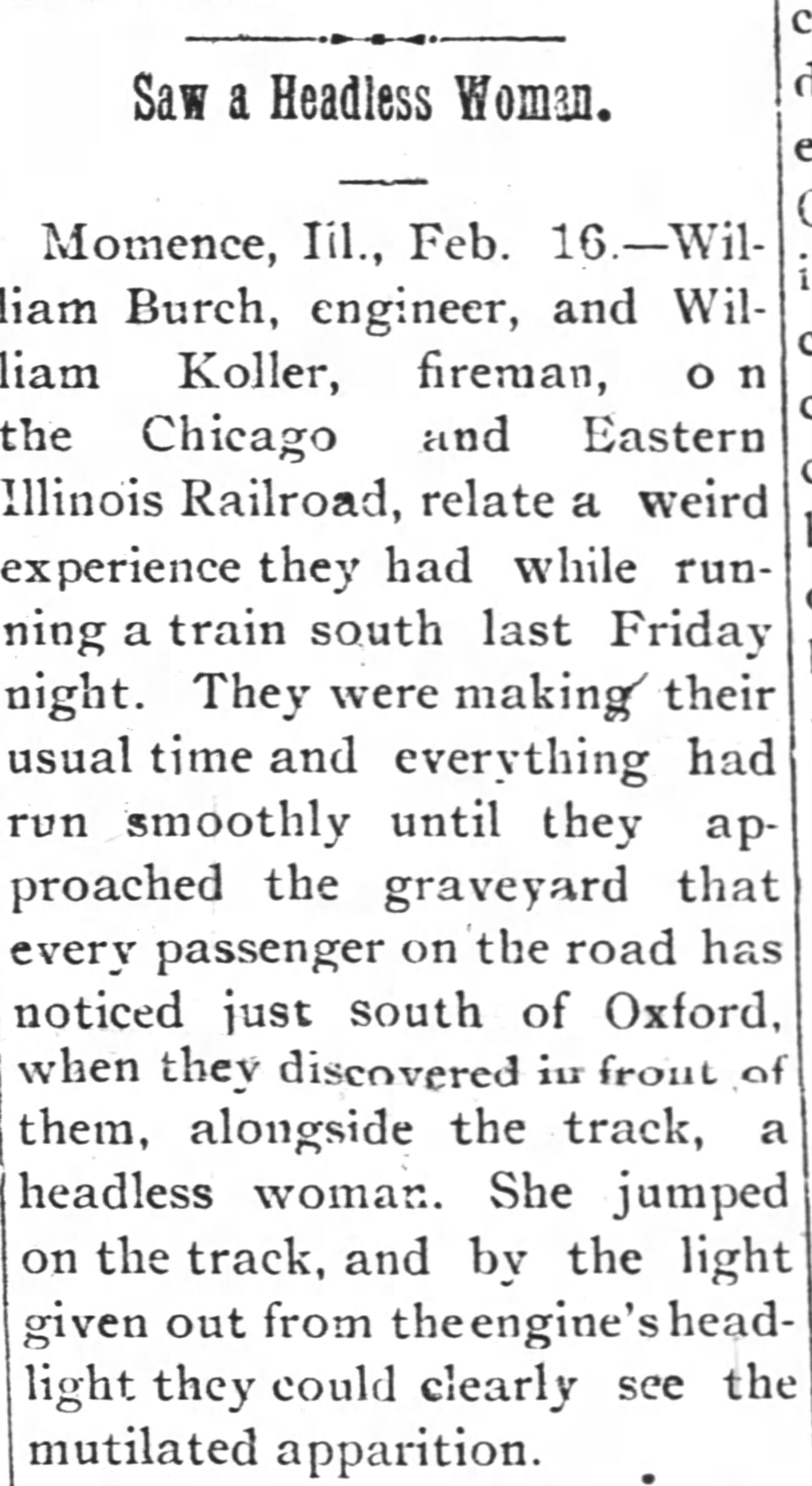

The Carthage Blade - February 28, 1893
A jailhouse apparition

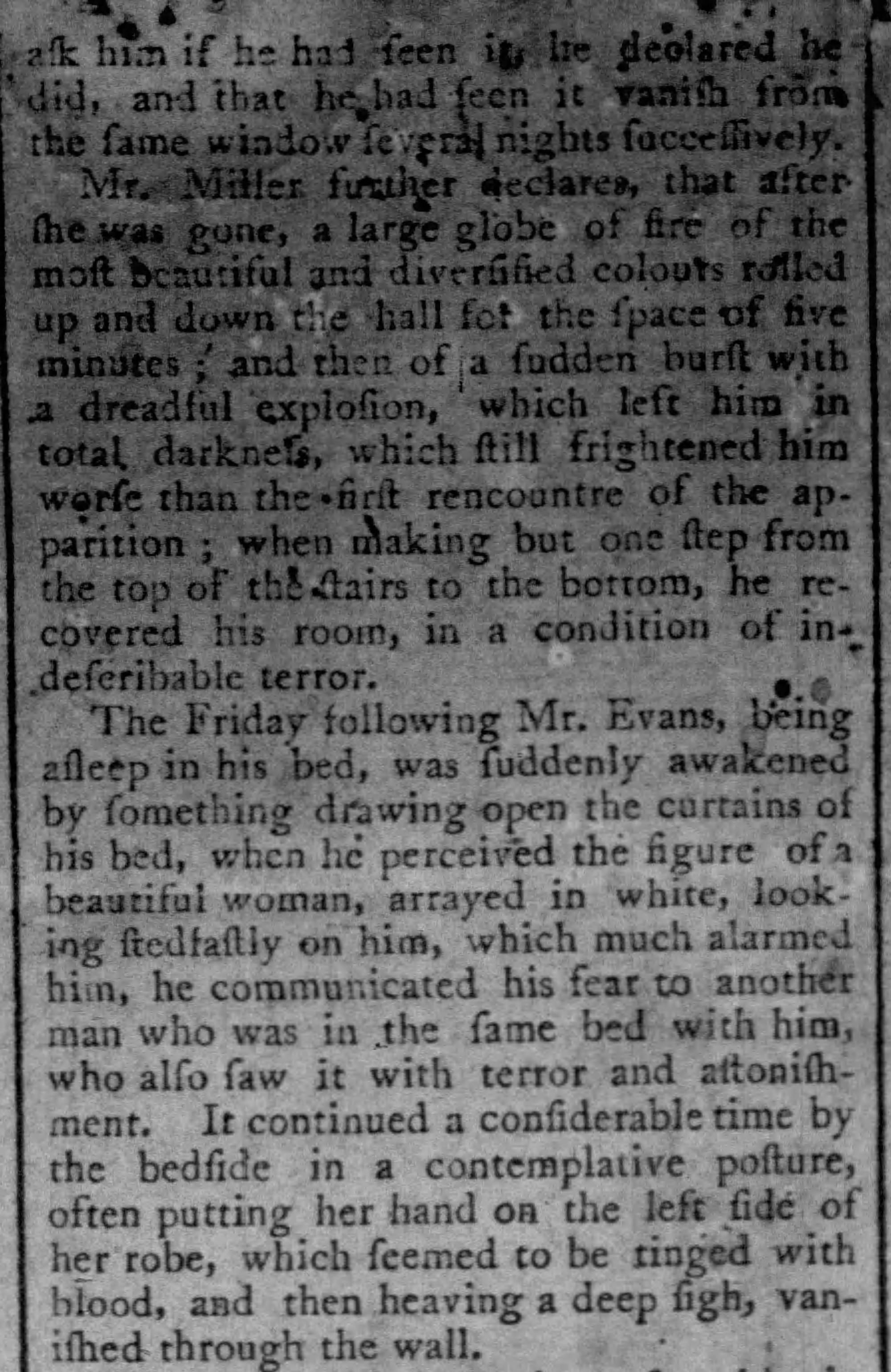
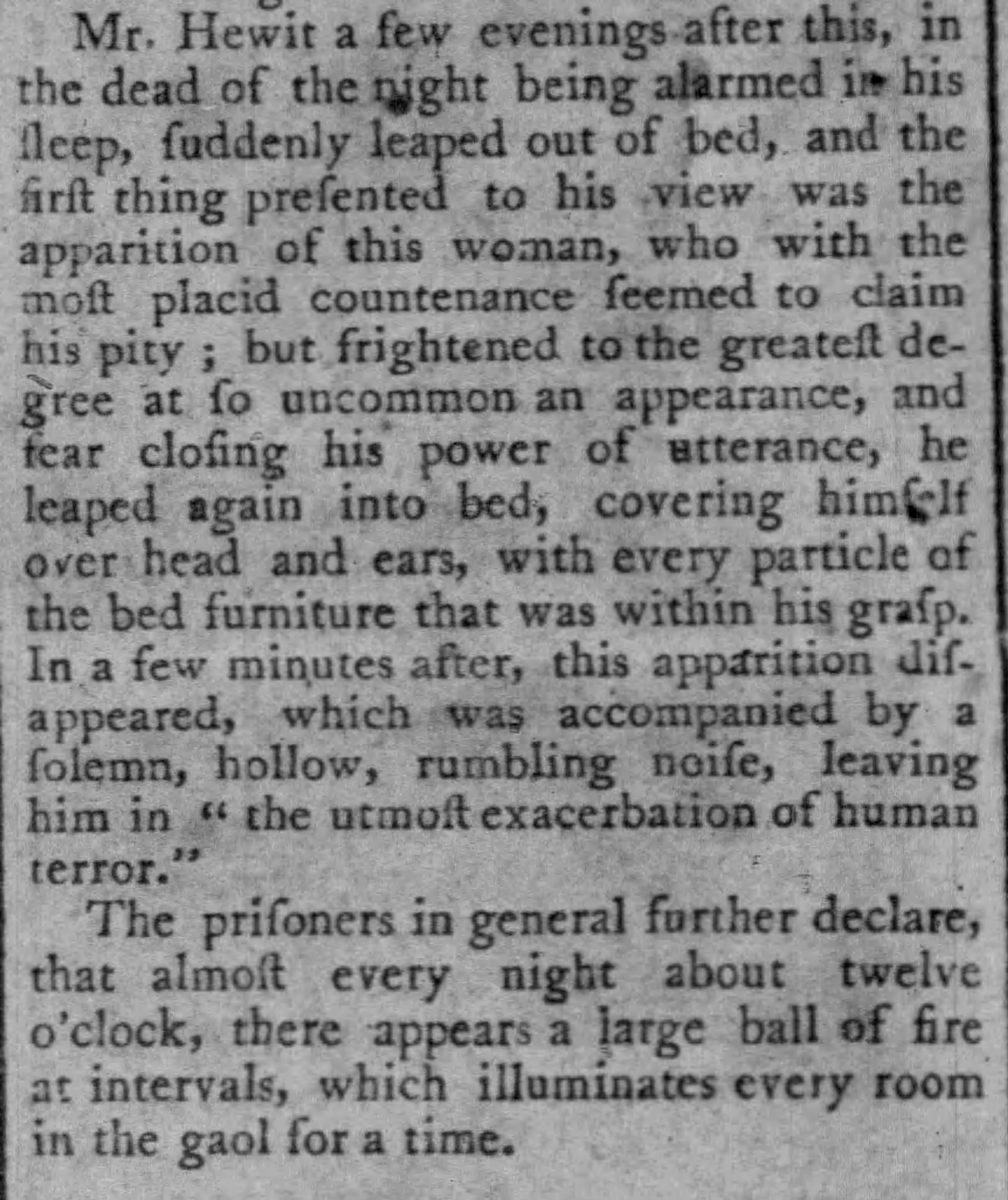
The Recorder - February 7, 1798
The Bloody Butcher



Kansas City Journal - June 3, 1895
Vampiric newborn baby
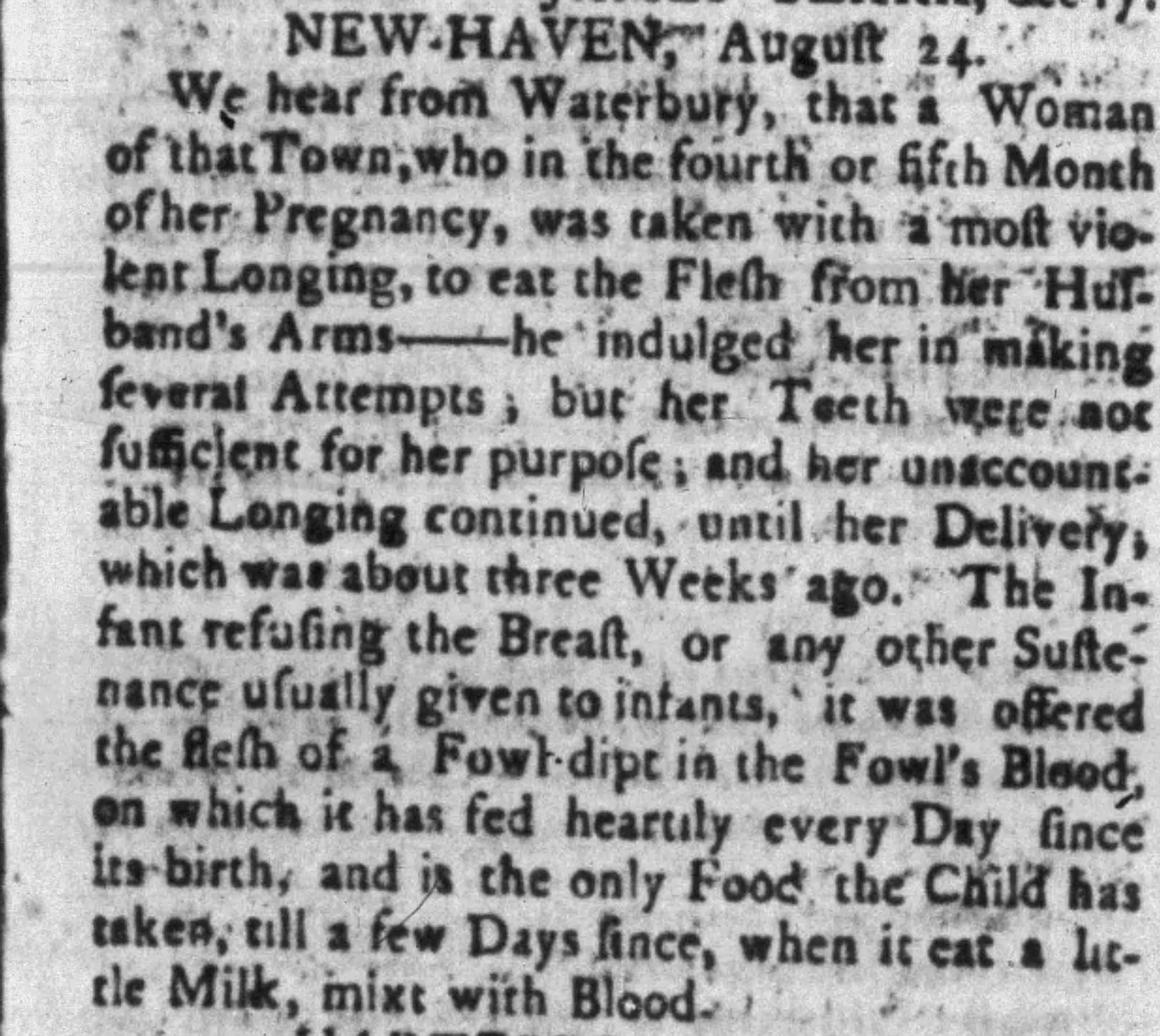
The cannibal's cave of death

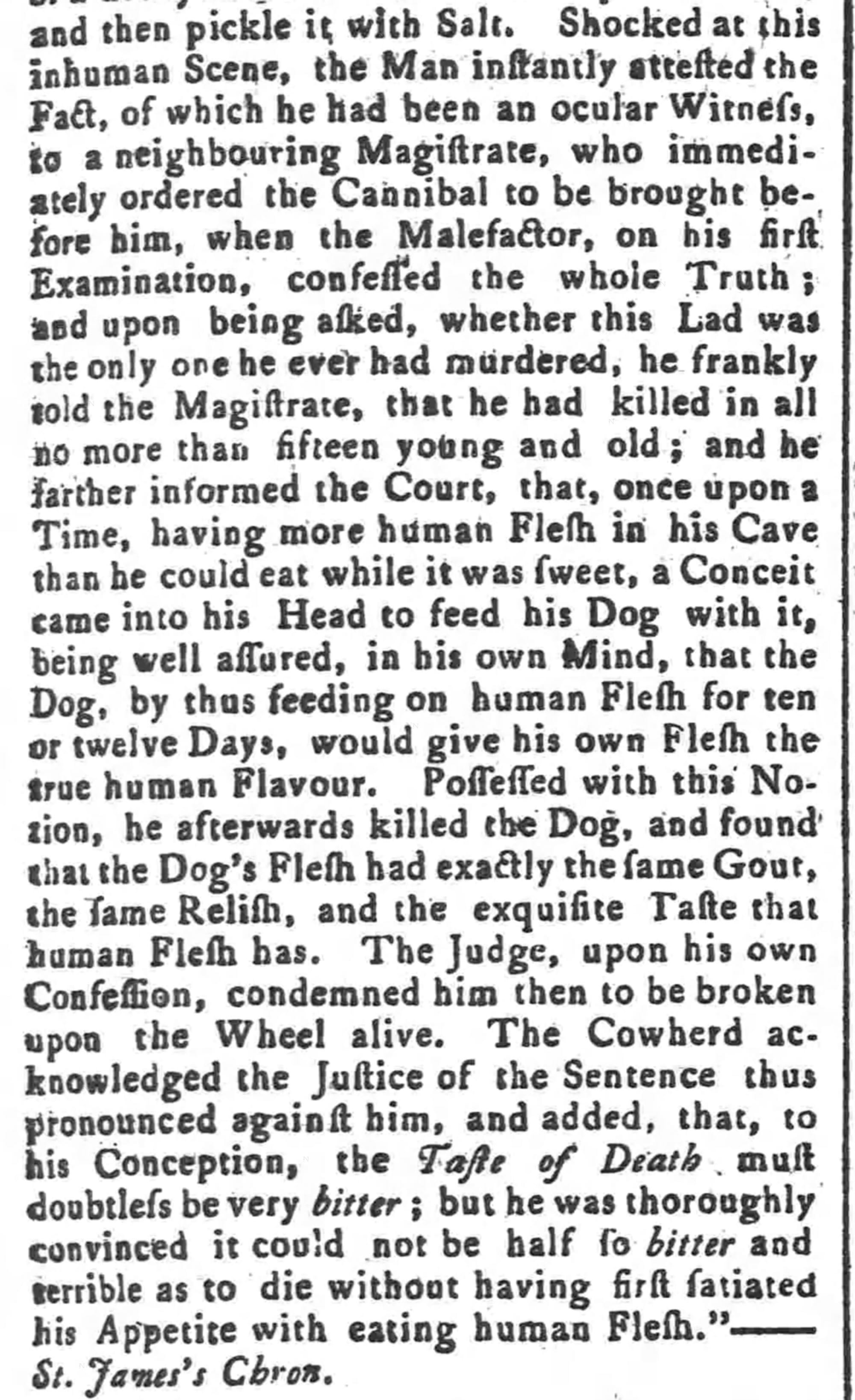
The Derby Mercury - August 28, 1772
The Wratten murders
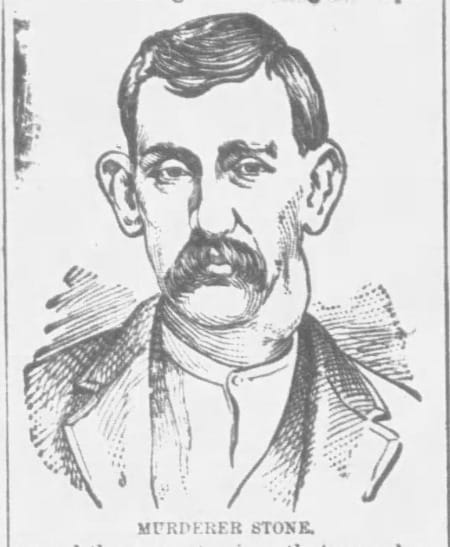
Initial Report:
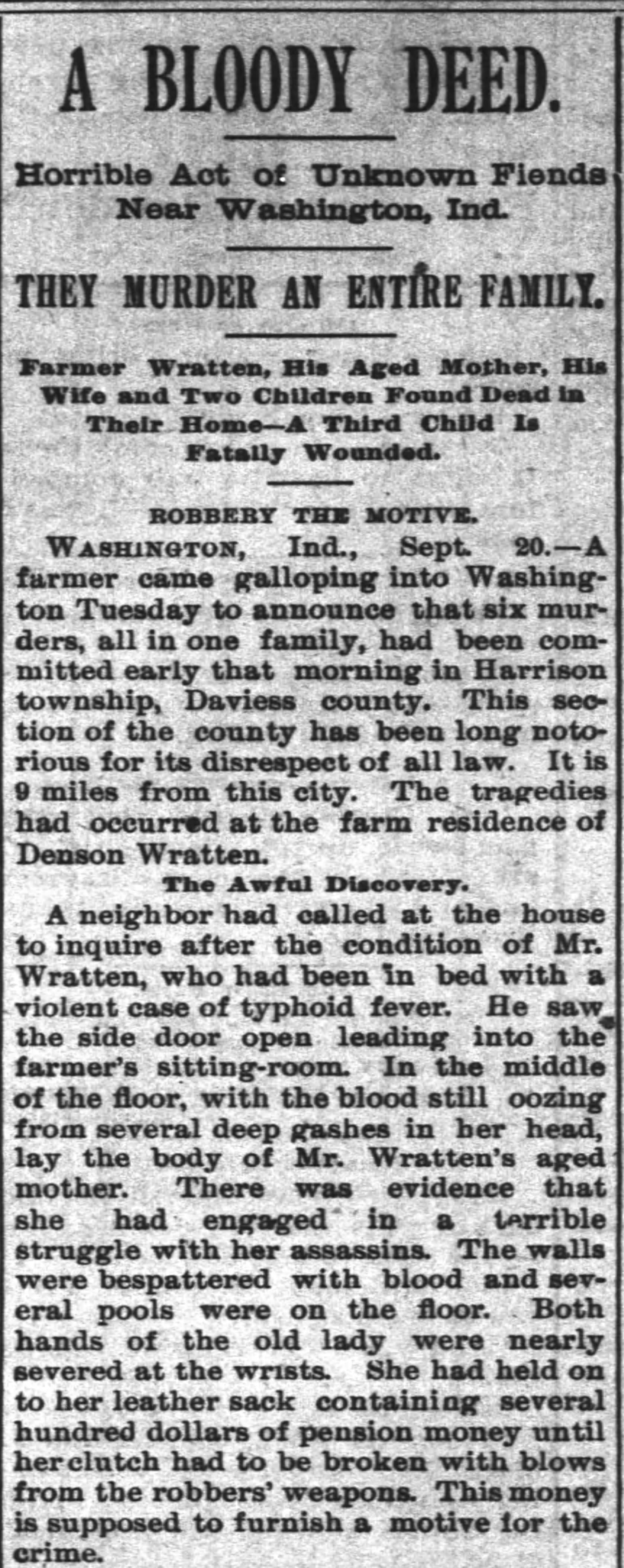
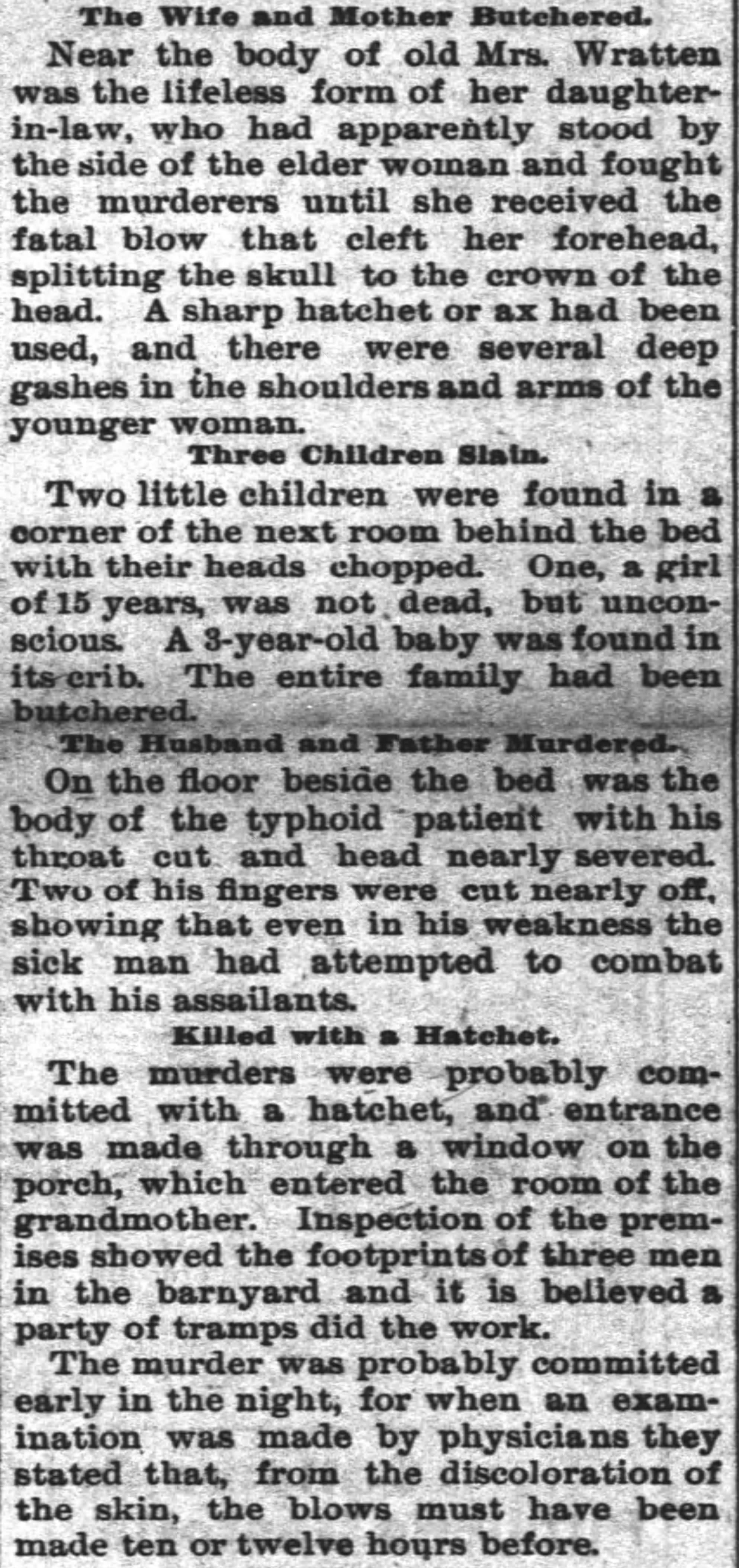
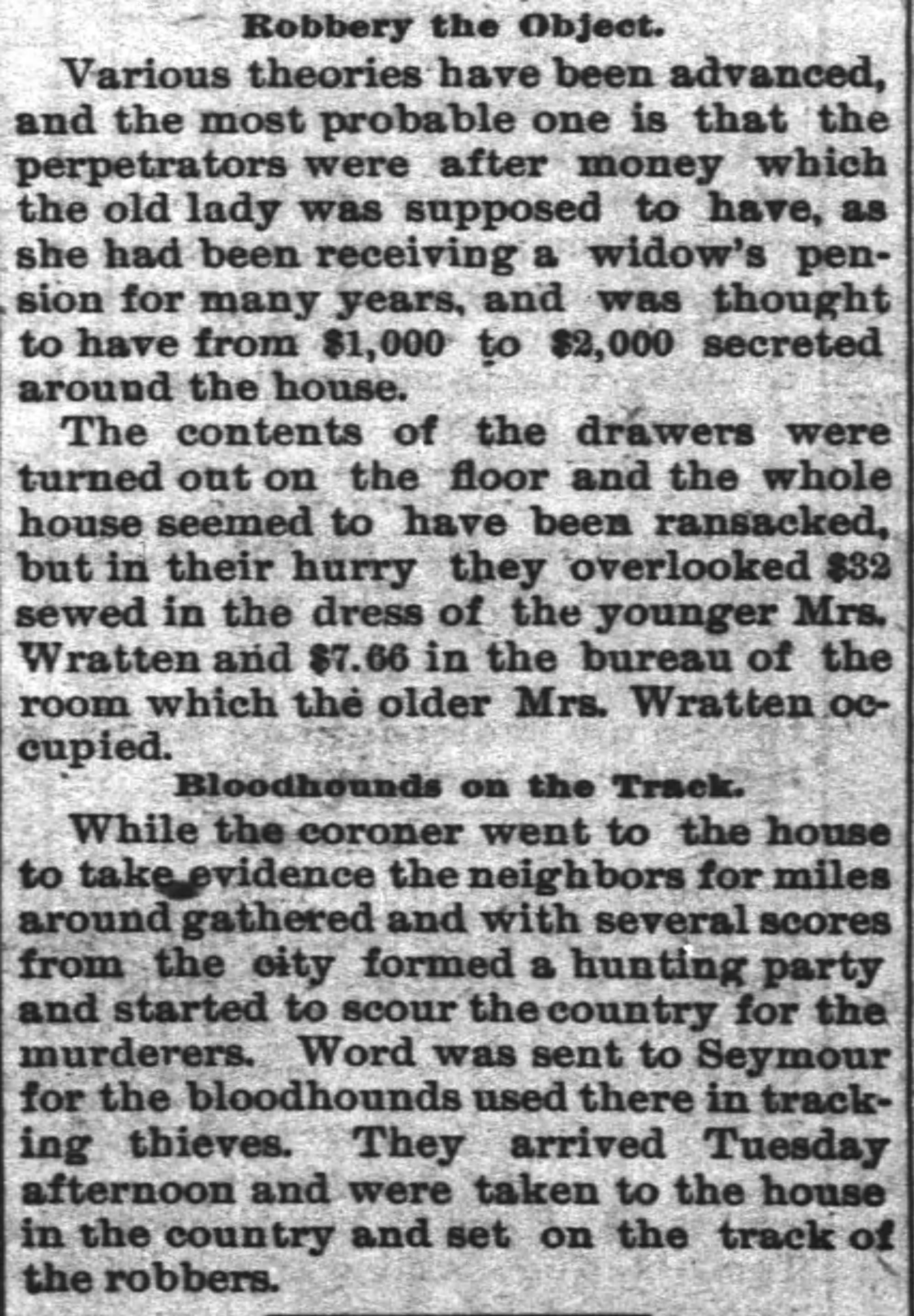
The Daily Democrat - September 20, 1893
